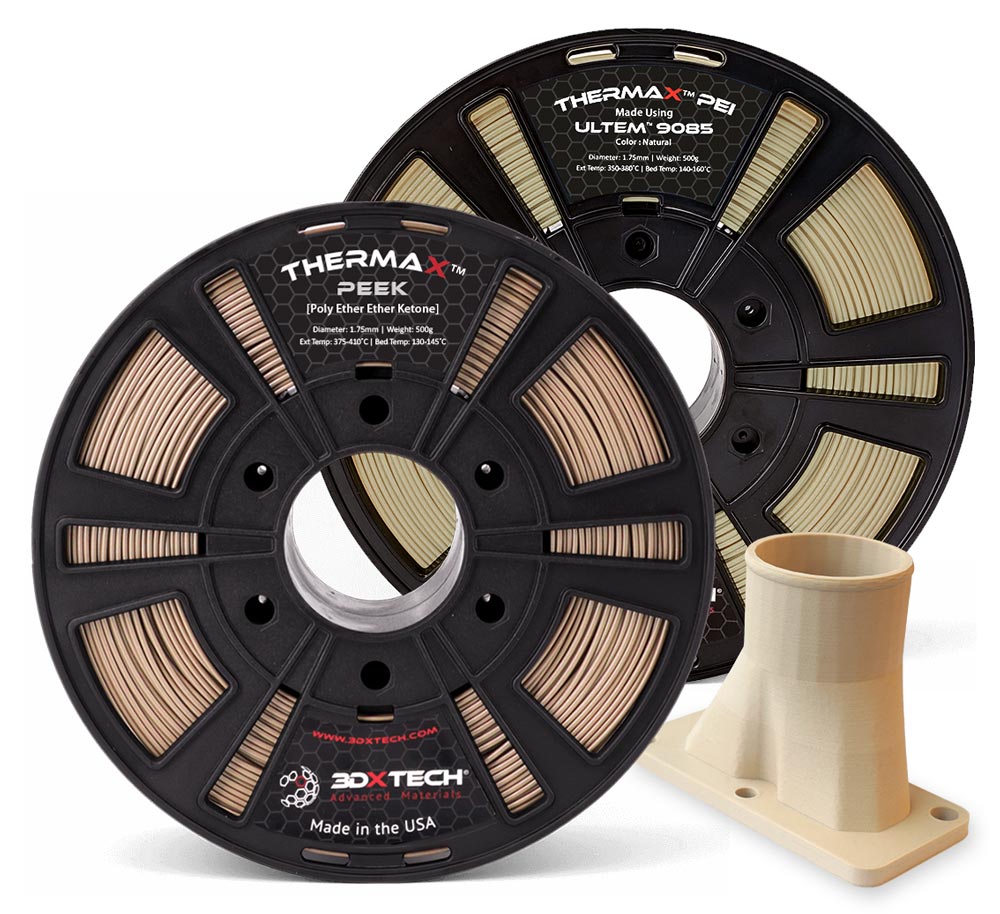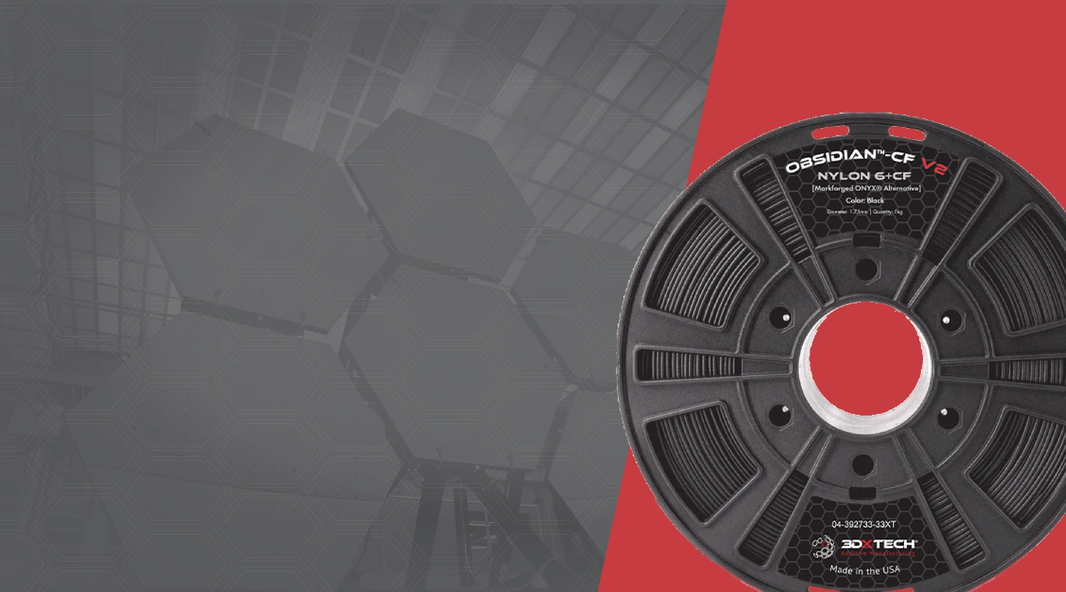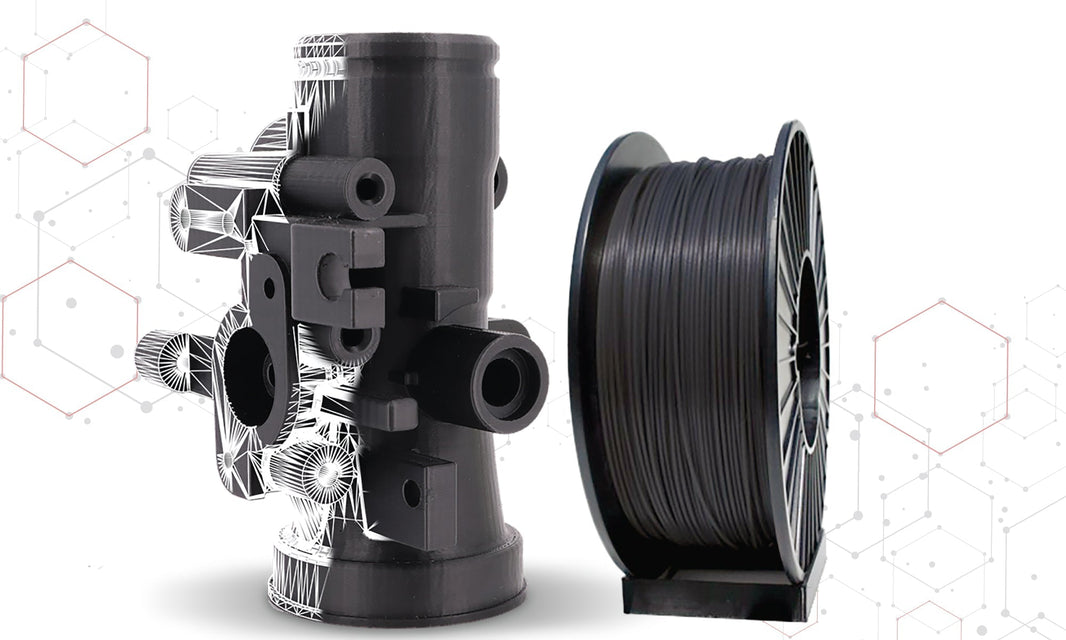Chemical-Resistant Filaments for Harsh Environments
In industries where parts are exposed to aggressive chemicals, fuels, solvents, and extreme environments, standard 3D printing materials are not enough. High-performance, chemical-resistant filaments such as PEEK, PEKK, PPSU, PSU, and PVDF are engineered to maintain strength, stability, and functionality where other materials fail. These materials make additive manufacturing a reliable choice for mission-critical parts in aerospace, automotive, oil & gas, defense, and chemical processing.
Why Chemical Resistance Matters in 3D Printing
Applications in harsh environments demand more than mechanical strength—they require long-term durability when exposed to corrosive chemicals. Traditional polymers often degrade or swell, leading to premature part failure. By leveraging chemical-resistant filaments, engineers can create components that withstand acids, solvents, hydrocarbons, fuels, and cleaning agents without compromising performance.
Top Chemical-Resistant Filaments
PEEK (Polyether Ether Ketone)
PEEK filament is one of the most chemically resistant thermoplastics available for 3D printing. It offers outstanding resistance to hydrocarbons, acids, and organic solvents, while also providing high mechanical strength and heat resistance. Industries such as aerospace and oil & gas rely on PEEK for end-use components, seals, and structural parts that must endure extreme environments.
PEKK (Polyether Ketone Ketone)
PEKK filament shares much of PEEK’s chemical resistance but provides greater processing versatility. It demonstrates excellent resistance to fuels, hydraulic fluids, and chemical agents, making it a preferred choice in defense, aerospace, and automotive applications where reliability is essential.
PPSU (Polyphenylsulfone)
PPSU filament is valued for its excellent resistance to cleaning agents, acids, and disinfectants, which makes it particularly useful in medical, aerospace, and chemical processing applications. Its toughness and ability to withstand repeated sterilization cycles expand its use in demanding environments.
PSU (Polysulfone)
PSU filament offers strong resistance to mineral acids, alkalis, and hydrocarbon-based fluids. Its transparency, combined with toughness and heat resistance, makes it valuable for fluid-handling parts, housings, and electrical components where exposure to harsh environments is unavoidable.
PVDF (Polyvinylidene Fluoride)
PVDF filament is an exceptional choice for parts requiring chemical resistance in addition to UV and radiation stability. It withstands strong acids, halogens, and solvents, making it ideal for seals, gaskets, chemical processing equipment, and outdoor components in oil & gas and industrial manufacturing.
Applications Across Industries
- Aerospace: Fuel system components, electrical housings, connectors, seals
- Automotive: Fluid-handling components, fuel system parts, under-the-hood applications
- Oil & Gas: Chemical processing tools, fittings, seals, and protective housings
- Defense: Mission-critical parts resistant to fuels, cleaning agents, and field chemicals
- Medical & Industrial: Sterilizable housings, fluid systems, and long-lasting tooling
Why Choose Chemical-Resistant Filaments?
The ability to print parts that resist degradation in the presence of aggressive chemicals gives engineers confidence in both prototype testing and end-use production. By using filaments such as PEEK, PEKK, PPSU, PSU, and PVDF, manufacturers can shorten lead times, reduce costs compared to traditional machining, and ensure reliable performance in the most demanding environments.
Related Reading
- End-Use Parts with High-Performance Filaments: Bridging Prototyping and Production
- PEEK vs PEKK vs Ultem: Choosing the Right High-Performance Filament
- Flame-Retardant Filaments for 3D Printing: FR-ABS, FR-PC-ABS, PEEK, Ultem & More
- ESD-Safe Filaments: PLA, ABS, PC, Ultem 1010, and PETG for Electronics Applications
- Polycarbonate Filament: Strength and Durability for Aerospace, Automotive, and Manufacturing






